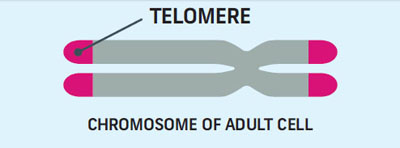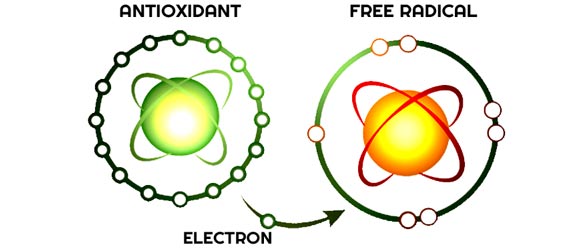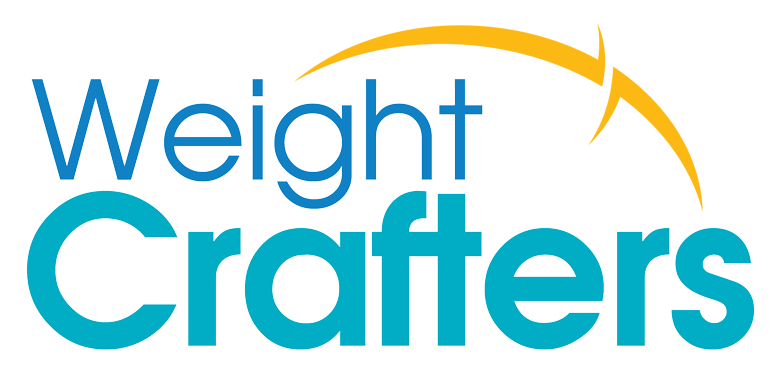Your Body and You: Staying Fit Past 50

Everybody ages. You can’t change growing older. It’s just a fact of life.
You can however, manage the aging process.
With the right adjustments to your daily lifestyle, you can take the bite out of turning 50. Or 60. Or even 70 and 80.
The first step is to identify the ways our bodies change as we grow older, and the reasons behind these changes.
It All Starts in the 40’s
Most of the changes that take place as we grow older are gradual – but some seem to come on rather suddenly – perhaps even startlingly.
We start to see signs of aging as early as our mid 20’s, but things really start to fundamentally shift in the mid 40’s.
Some of the more noticeable changes include dulled hearing and difficulty seeing objects close-up. Hair that may have started to show a few grey or white hairs as early as your 20’s now starts greying itself out in earnest. Wrinkles begin to appear. You may also begin gaining weight, even if your diet and daily routine haven’t changed.
There are also hormonal changes going on as you approach the 50 mark, including a decrease in Testosterone and Estrogen production.
For women, this manifests as menopause – usually between 45 and 50. Most men do not experience this kind of abrupt hormonal change, but about 15% will see a drop in testosterone sharp enough to be noticeable.
Of course with all of these changes coming into sharper view, the 40’s are also the most natural time in life to experience a mid-life crisis.
As you crest 50, more changes will surface.
Your sleep patterns will start to change, as for the first time your body actually requires less sleep.
Joints you never thought about before will start to ache for no obvious reason.
Skin begins to thin and produce less oil, resulting in more wrinkles, reduced elasticity and dryer skin.
Your bones begin to lose density and weaken as you enter your 50’s as well. This is especially true for women, as the hormonal changes of menopause can disrupt the body’s natural bone building processes.
50 is also a prime time to start noticing that your memory isn’t what it once was. You may find yourself losing your train of thought, getting words stuck “at the tip of your tongue,” and forgetting why you entered a room or made a trip to the store more frequently than before.
What Actually Causes Aging
Aging has long been studied, and hundreds of ideas have been posed on exactly what causes us to “grow old”. While there is still no single explanation that nails it down conclusively, there are a couple of theories that seem to be the best at explaining it.
The two most widely accepted theories on why our bodies age are the “Genetic Programming” theory and the “Damage” theory.
The Genetic Programming theory takes note of hormonal signals that our brains feed out to our bodies as we grow older. Certain hormones are known to steadily decrease as we age, and this process bears some resemblance to a “master clock.”
The hormones in question govern a whole host of bodily systems. As we grow older these systems begin to work less efficiently. When one or more of them finally break down altogether, it’s game over.
The Damage theory considers the “weathering” our bodies take as they struggle to remain alive. This weathering comes from both external sources like pollution and toxins, and internal sources like our bodies’ own day to day operation.
The process of cellular reproduction itself causes damage, ultimately leading to cell death.
Every cell in your body contains a copy of your genetic code, in the form of DNA strands called chromosomes. At the tips of these strands are stretches of DNA called “telomeres” – which act like the lead ribbon on a tape or the plastic tips on a shoelace.

Every time the cell divides, these telomeres become shorter. Eventually, they become so short that the cell can no longer divide – and it simply dies. This cell death is actually one of the primary reasons that our skin thins out as we grow older.
Another natural process that damages the body is the production of “free radicals” through an imbalance of nutrients and chemicals called Oxidative Stress.
If you’re just a tad rusty on molecular biology, here’s what that entails:
Oxygen is required to keep every cell in your body running. When you breathe, oxygen is absorbed. This oxygen is then combined with glucose to produce water and carbon dioxide. This process also releases energy – which is the primary reward for doing it.
Oxygen also interacts with antioxidants such as Vitamins A, C and E, as well as other vitamin cofactors and minerals found in food.
So far, so good, right?
Well, not exactly. The only reason any of this works, is that Oxygen (O2) and its’ other common raw forms such as Hydroxyl, Hydrogen Peroxide and Superoxide wants to combine or react with other elements. This makes these molecules “reactive,” and is what causes them to break apart glucose as they do.

If there aren’t any glucose molecules or antioxidants to react with however, it will react with anything else that’s handy. When the oxygen atoms steal electrons from other elements, those elements become "Free Radicals" that will in turn steal back electrons from other nearby atoms and start a chain reaction.
This causes damage to cells and tissues, and can even produce cancer-causing toxins in your system... And it happens every day inside our bodies.
What’s to be done, then?
Aging is partially about time and genetics, and partially about wear and tear on your body. You can’t change the time or genetic elements – but much of the wear and tear on your system can be avoided by taking some simple, proactive steps.
Adjust Your Diet
The first, and perhaps most singularly important step, is to ensure that your diet is providing as many important vitamins and nutrients as possible, while keeping your calorie intake either equal-to or lower-than your daily calorie burn.
This means eating lots of veggies.
Vegetables – especially colorful or leafy ones – are incredible sources of antioxidants. Antioxidants prevent reactive oxygen molecules from binding to important cell tissues, damaging your organs, and producing dangerous free radicals. This in turn can help prevent macular degeneration (the leading cause of blindness after age 64), keep your skin in better condition, and reduce your risks of cancer and heart disease.
This also means eating whole grains and lean meats.
A diet rich in whole grain such as oats, barley, wheat, quinoa and brown rice can lower your risk of developing Type 2 Diabetes, as well as promote good vascular health. Avoiding meats high in saturated fats also helps to keep your arteries and vascular system running smoothly.
Sugar has to go, too.
![]()
First, simple sugars go straight into your bloodstream very quickly, putting tremendous stress on your system. When they’re gone, the overabundance of glucose becomes a drought, which does the same thing. Over time, excess calories will also cause insulin resistance – which in turn leads to Type 2 Diabetes. Diabetes in turn damages your circulatory system and leads directly to heart disease. And heart disease is the number 1 killer of adults in the United States.
Also, augment your diet with fish, nuts and beans.
Fish contains significant amounts of Omega-3 fatty acids that work in a variety of ways to slow the aging process and keep you healthy. Not the least of these being a reduced risk of heart disease, stroke and lowered chances of developing Alzheimer’s disease.
Many tree nuts also contain these beneficial fatty acids, and can improve brain function. Beans meanwhile, are a great source of protein, high in fiber and can help lower cholesterol.
Control your calorie intake
If you are already at an ideal weight, this just means ensuring that your calorie intake is roughly the same as your daily calorie burn. If you are overweight or obese however, then you need to start eating fewer calories per day than you burn. Immediately.
Obesity is the leading cause of diseases leading to premature death in America – and by a wide margin. It’s true that everyone is different, and some healthy adults weigh slightly more for their height than others – but there is no such thing as being healthy and overweight.
Start an Exercise Routine
Diet is definitely important, but exercise is just as important – especially as we age.
The benefits of exercise include improved mobility, reduced body pain, improved mood, and increased lifespan.
Yes – I said increased lifespan.
Many studies have shown that increased daily activity and exercise directly correlates with increased life expectancy. A study in Switzerland for example found that sedentary people who started using stairs instead of elevators on a daily basis were 15% less likely to die prematurely. A research team also used Copenhagen City Heart Study data to prove that people who jogged 30 minutes per day, 3 days per week lived an average of 5.9 years longer than their peers.
A Taiwanese study in 2011 across 416,000 participants showed that just 15 minutes of moderate exercise (a brisk walk across your neighborhood for example) could add an average of 3 years to your life, and reduce your risk of developing cancer.
“Compared to the inactive group, the low exercise [15 minutes per day] group has a reduction of 10 percent in cancer mortality,” said lead researcher Chi Pang Wen of Taiwan’s National Health Research Institutes.
Regular exercise has also been shown to reduce stress.
It may sound anecdotal, but stress really does have a tremendous bearing on the aging process – and the reasons for this are completely scientific.
When you feel stressed, your body goes into a state of high alert – essentially preparing you to engage in a “fight or flight” situation. This reaction is obviously helpful in an actual fight or flight situation where immediate action needs to be taken. Chronic stress – when you stay in this heightened alert state over a period of time – isn’t so helpful. It actually wreaks outright physical havoc on your body.
Among other things, sustained stress can cause headaches, nausea, tense muscles, low energy, rapid heartbeat, increased blood pressure and a host of other unpleasant effects. It even reduces your immune system’s ability to fight off viruses and infections.
Exercise releases endorphins into your system that act as antidepressants. The antidepressant capabilities of regular exercise have in fact been shown to work just as powerfully as many prescription depression drugs. The effect on stress is – for many – immediate and dramatic.
Safe Exercise Choices
If you’re over 50, choosing the right exercise routine is especially important. Engaging in regular exercise can improve your flexibility, balance, strength and even immune system – but the wrong type or intensity can also lead to painful injuries that will be a serious impediment to your routine.
The biggest key to safe exercise techniques as you get older, is finding activities that are "low-impact." As you get older, joint pain becomes a real issue – and high impact activities like jogging can very quickly turn minor aches into serious pain.
Here are a few ideas for good exercises that won’t leave you in a world of hurt:
Fire Up the Elliptical
For a good heart-pounding leg workout, it’s natural to look to the trusty treadmill or simply go outside and hoof it on down the sidewalk... And these are excellent exercises that you should be doing!
However, an elliptical machine can give you just as much challenge while putting far less stress on your knees, hips, feet and lower back.
Ellipticals are everywhere so they’re fairly easy to find – even in the poorly equipped gym at your apartment complex or office. The workout you’ll get is also surprisingly intense, and a decent elliptical will allow you to adjust the difficulty to bring your heart rate up without overdoing it.
Additionally, ellipticals are very easy to use and give a good feeling of confidence once you’re on them. For bonus points, if you’ve got a TV or iPod handy it’s easy to get lost in the music and forget you’re even working out. Win win win.
Start Strength Training
Don’t be afraid of the weights! Strength training improves core strength, helps you balance better, and generally gives you better ability to exercise and perform other tasks going forward. Fears of getting bulky are also completely unwarranted, provided you’re sticking to the calorie restrictions we discussed above. In fact, strength training offers huge advantages when trying to shave inches and lose pounds.
As you age – and especially after menopause – bone density decreases and your bones gradually weaken. This is one area where strength training can offer huge benefits, as following a full body strength building routine can cause direct improvements in bone strength and density.
Strength training also improves the way your muscles, tendons and bones connect – and your coordination. Put it all together, and you can expect to start moving around quicker, lighter, and more like a younger version of yourself. If you want to really start to feel younger, the agility you’ll gain from improved over-all muscle strength is exactly how you get that.
Skeptical?
Click here to watch a video of 78 year old Shirley Webb deadlifting 225lbs. She’s only being exercising at the gym for the past 2 years. Prior to that, she couldn’t even get up off of the floor on her own without assistance.
Try Swimming & Water Aerobics
Water is an excellent source of resistance. Not only does it provide added work to every motion or movement, but this added resistance is steady and constant – perfect if you’re seeking a real challenge that won’t aggravate a tricky knee or former hip injury.
Swimming is the first and most natural activity we’re used to pursuing in water – and most people find it both challenging and relaxing. Swimming is commonly used by athletes to maintain fitness while healing from injuries – but it’s an excellent way to stay in shape no matter what your fitness level.
If there’s an instructor available at your pool, water aerobics can really step up the game and give you an intense but safe workout. Water aerobics is such an efficient low-impact exercise, that it is commonly used for rehabilitation after serious injuries. Even marathon runners commonly use water aerobics techniques to augment their routines. A balanced low-impact workout routine including water aerobics can even reduce the pain associated with osteoarthritis.
Get the Hang of TRX
TRX – also called suspension training – is a simple yet powerful way to build strength using your own body weight for resistance. Typically the only equipment required is a set of handled straps fixed to a ceiling (or any sturdy, fixed object above your head).
Typically, your center of gravity is just above the hips – and you spend nearly all of your time balancing it this way. TRX uses a number of different movements, stretches, poses and techniques to position your center of gravity out-of-line with your hands and feet, so your muscles have to work in unfamiliar ways to adapt and stabilize you.
While you may need an instructor to help you learn the various techniques best suited for your fitness level, strengths and goals, TRX provides a major advantage over many traditional strength training methods in that most of the exercises engage your entire body and therefore improve the way your brain tells your body what to do.
The result is a powerful workout that will improve your coordination, core strength, flexibility and agility – all without placing any excessive (or repetitive) stress on your bones and joints.
Get in the Groove Rowing & Kayaking
Boats aren’t just fun ways to navigate your local lake, river or stream – they’re also excellent opportunities for a full-body workout. Kayaking is perhaps the easiest way to get out on the water and start going places. It’s fairly intuitive, not too challenging, and offers a powerful core strengthening workout that will surprise you.
Don’t let the professional whitewater kayakers on YouTube scare you off, either. Many light sporting kayaks (especially those designed for ocean use) do not require you to zip yourself into the boat, but rather float entirely on their own and are easy to get in and out of in the case of a capsize.
Rowing is a completely different technique – but it offers even greater benefits because rowing is a full-body activity. At full tilt, rowing combines the arm and core resistance of weightlifting with the leg burning challenge of squats – and can bring some amazing tone to your arms, shoulders and back in the process.
Does your idea of rowing a boat on the open water bring back less-than-stellar memories of spinning around in circles to the laughter of onlookers?
Fear not! Indoor rowing machines offer all the same benefits in a fixed package with zero risk of going in circles. Additionally, fixed rowing machines often provide variable resistance so you can increase the power requirement as your strength improves – and perhaps best of all, you’ll never have to worry about blindly plowing into the side of a passing canoe.
The Trick is Starting
There are plenty of ways you can slow the effects of aging, improve how you feel and add years to your life.
The catch is, you have to pursue them!
Time marches on. Every year, month, week and day you put it off takes you further from your goals.
So take charge, set some goals, and start living younger today!
How did we do?

Rated 4.1 of 5 Stars by 157 readers.


